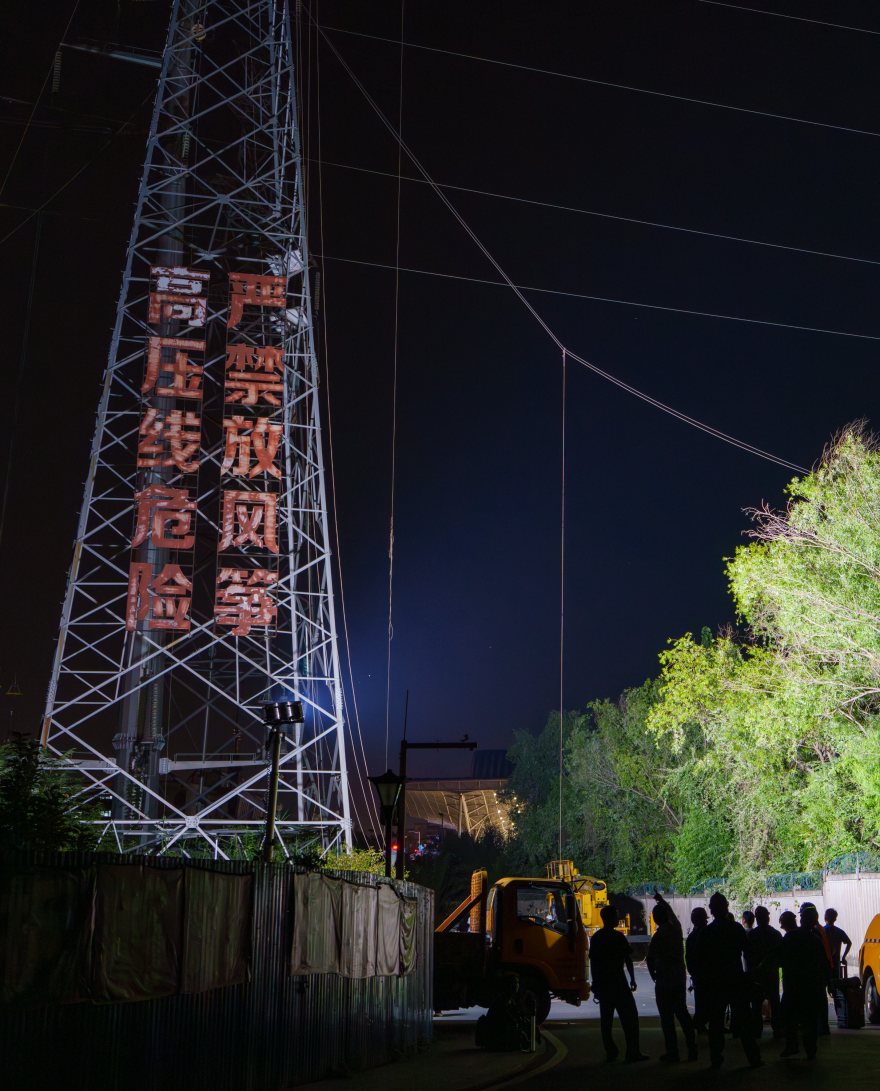In the early hours of June 18, State Grid Wuhan Power Supply Company dismantled four high-voltage lines totaling 2 kilometers near Wuhan Railway Station. This operation aimed to ensure the safe and stable operation of both the high-speed rail and the power grid, while also enhancing the power supply reliability of the Yangchunhu Business District in Donghu New City.

Workers dismantle high-voltage lines crossing the Wuhan Railway Station high-speed rail tracks under the night sky
Photo by Zhang Heng
At around 1:00 AM, the train tracks at Wuhan Railway Station were brightly lit. Electric power workers were climbing towers and dismantling lines, with occasional sounds of coordinated work echoing through the night. They had to climb four 50-meter-high pylons and complete the dismantling of 2 kilometers of high-voltage lines within the 4-hour window period when trains were not operating.

Construction site
Photo by Zhang Heng
"The high-voltage lines being dismantled cross 20 high-speed rail tracks, which presents a high-level Class II construction risk," explained Lu Qi, the on-site supervisor and Deputy Director of the Project Management Department at Huayuan Electric Power Company, a subsidiary of State Grid Wuhan Power Supply Company. The entire operation lasted from 12:50 AM to 4:10 AM on June 18, ensuring that the dismantling of the 2-kilometer high-voltage lines crossing the high-speed rail tracks was completed without disrupting train operations.
Yangchunhu is a key area linking the Yangtze New Area, the Yangtze Main Axis, and the East Lake Green Heart. The Yangchunhu Business District of Wuhan Donghu New City, currently under construction, is projected to become a key high-speed rail hub with a projected GDP exceeding 50 billion yuan within five years. At the end of 2024, Wuhan officially launched the Donghu New City Medium and High Voltage Relocation Project. Once the high-voltage lines are relocated underground, this will unlock economic potential in the core area of Donghu New City, injecting stronger momentum into Wuhan's economic and social development.
Copyright ©1997- by CRI Online All rights reserved